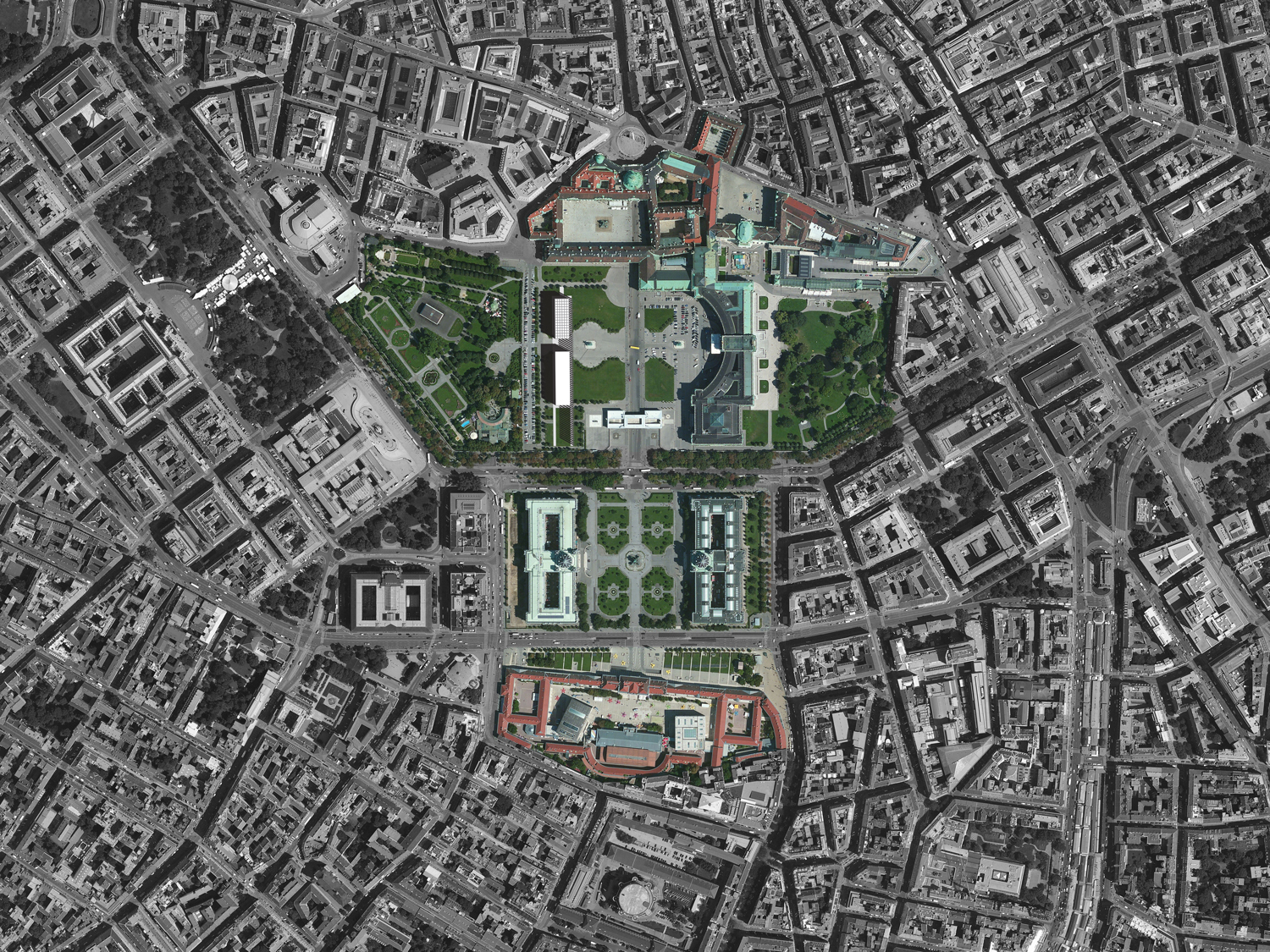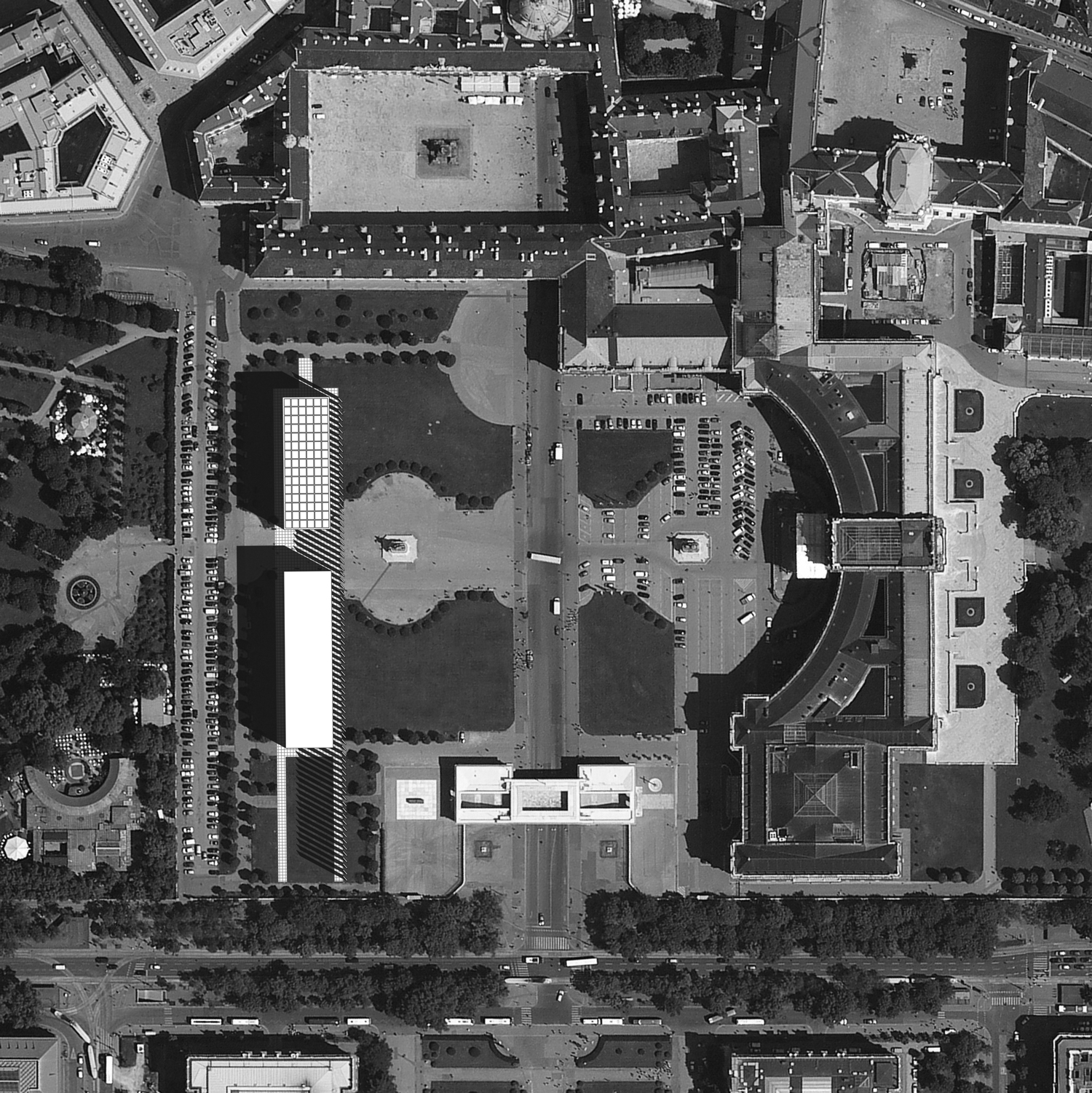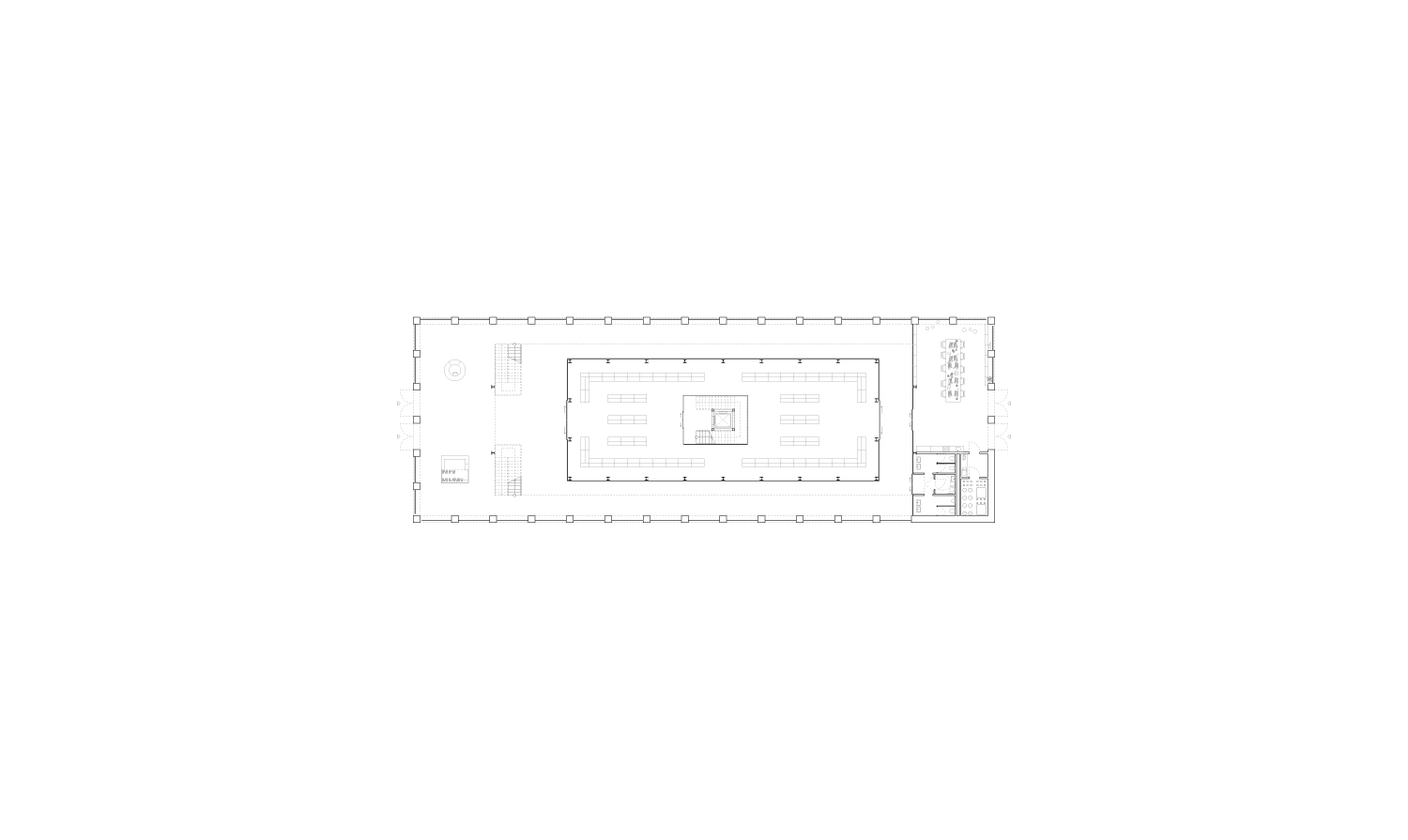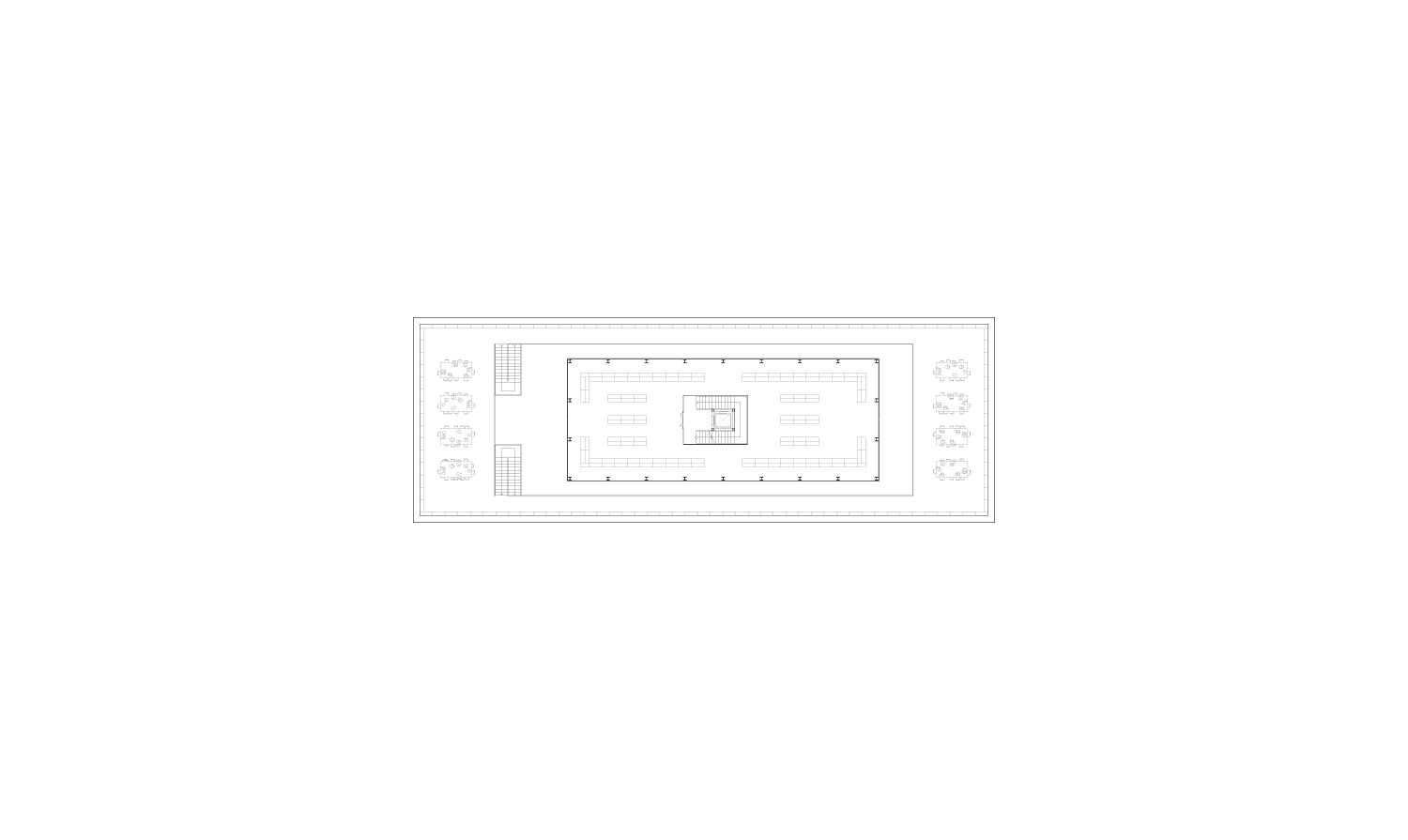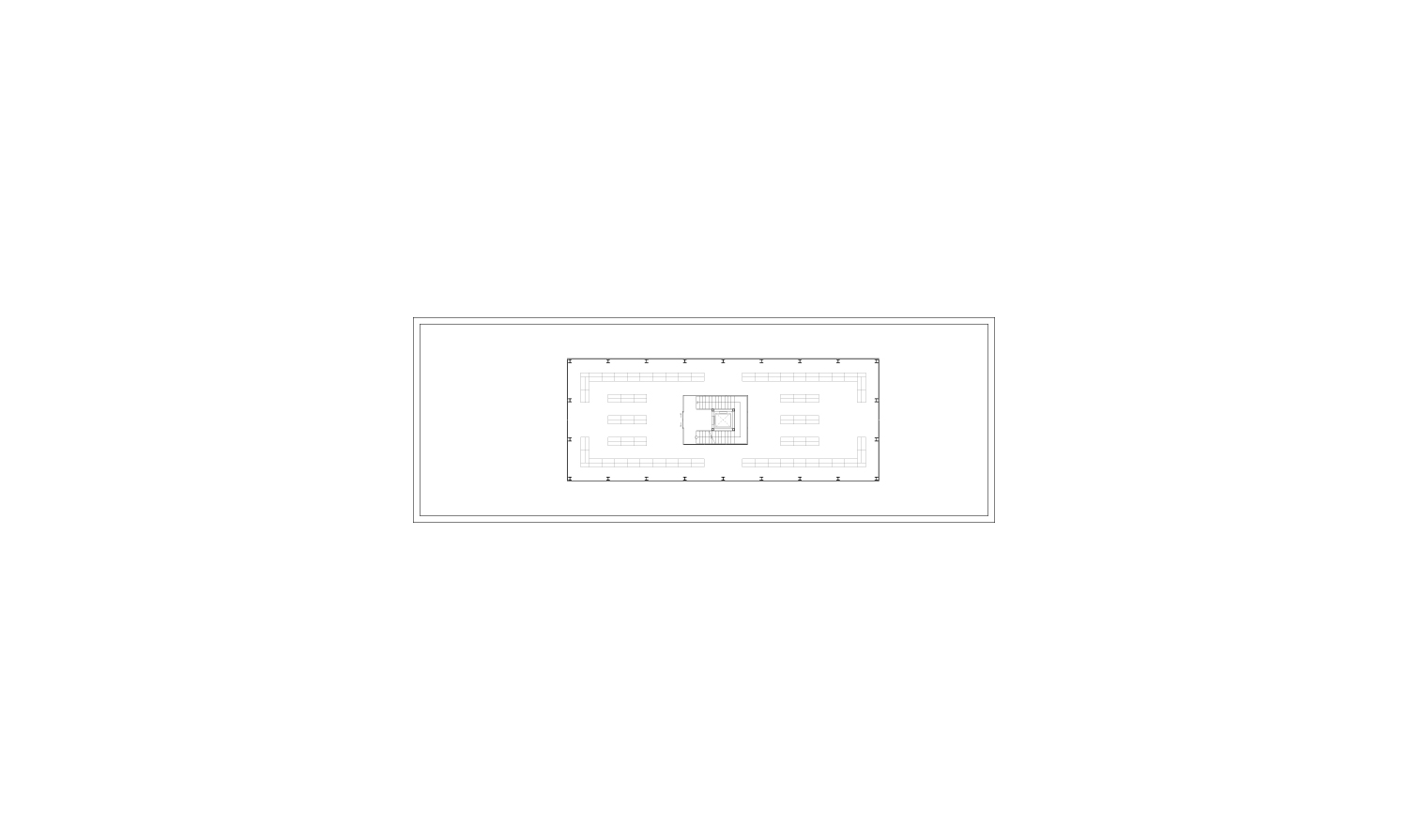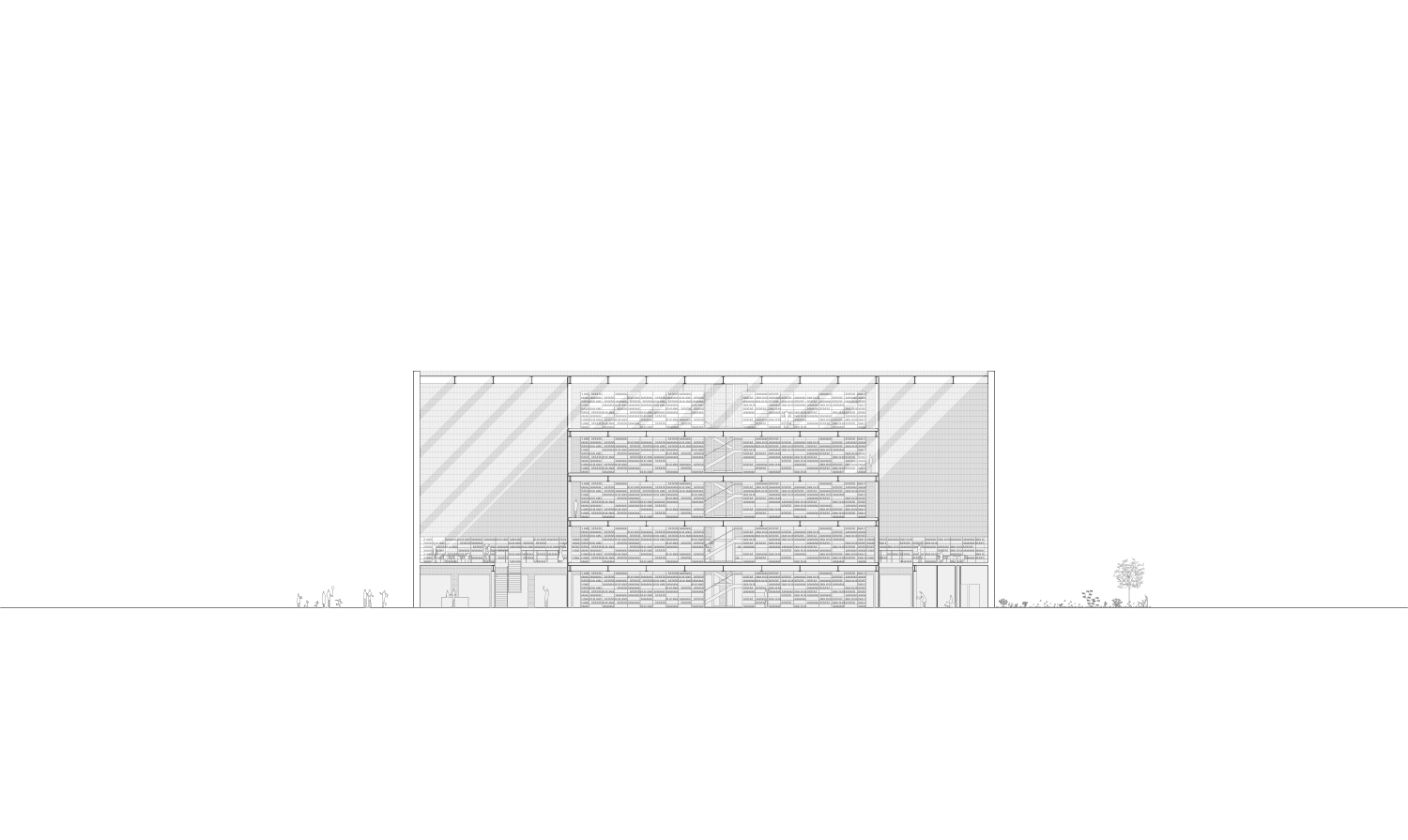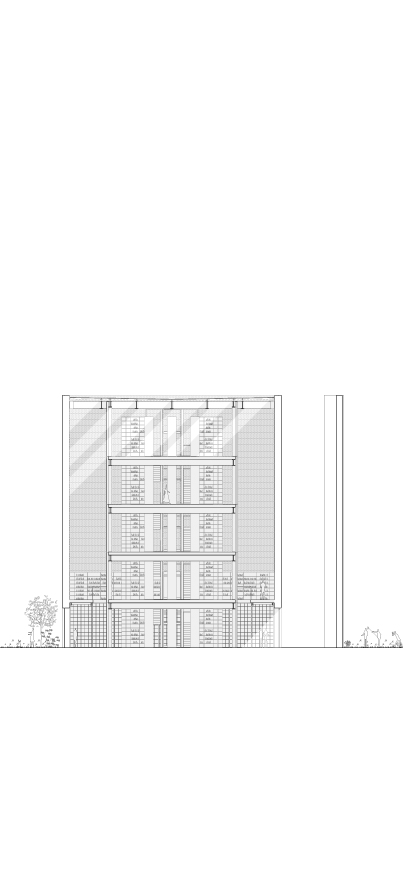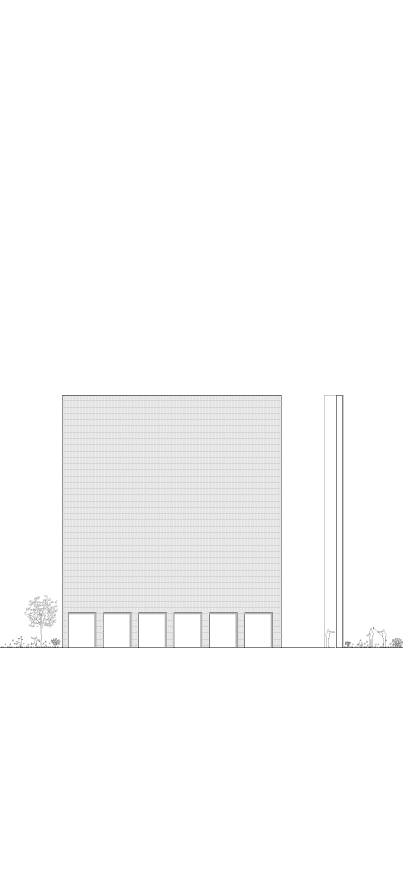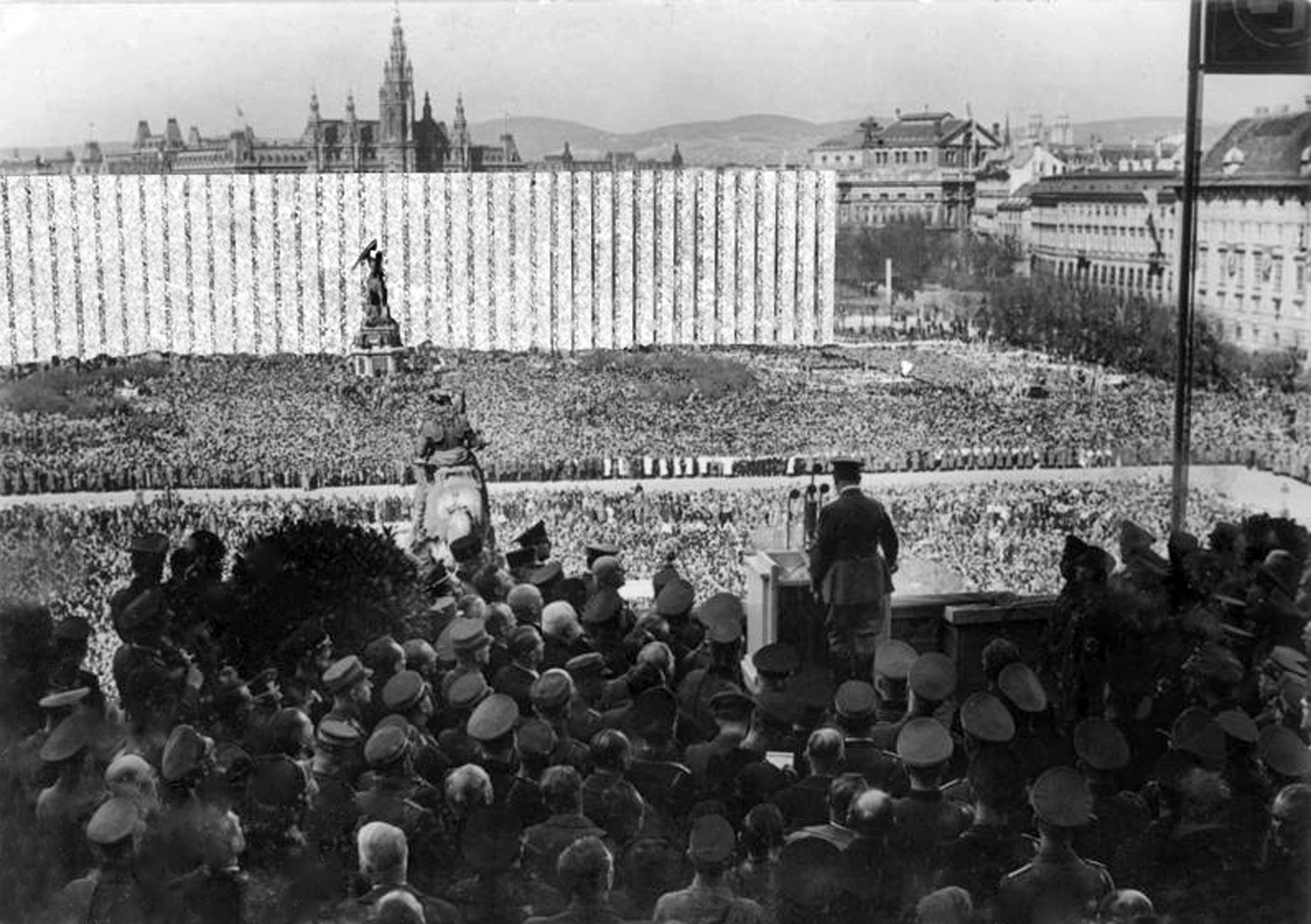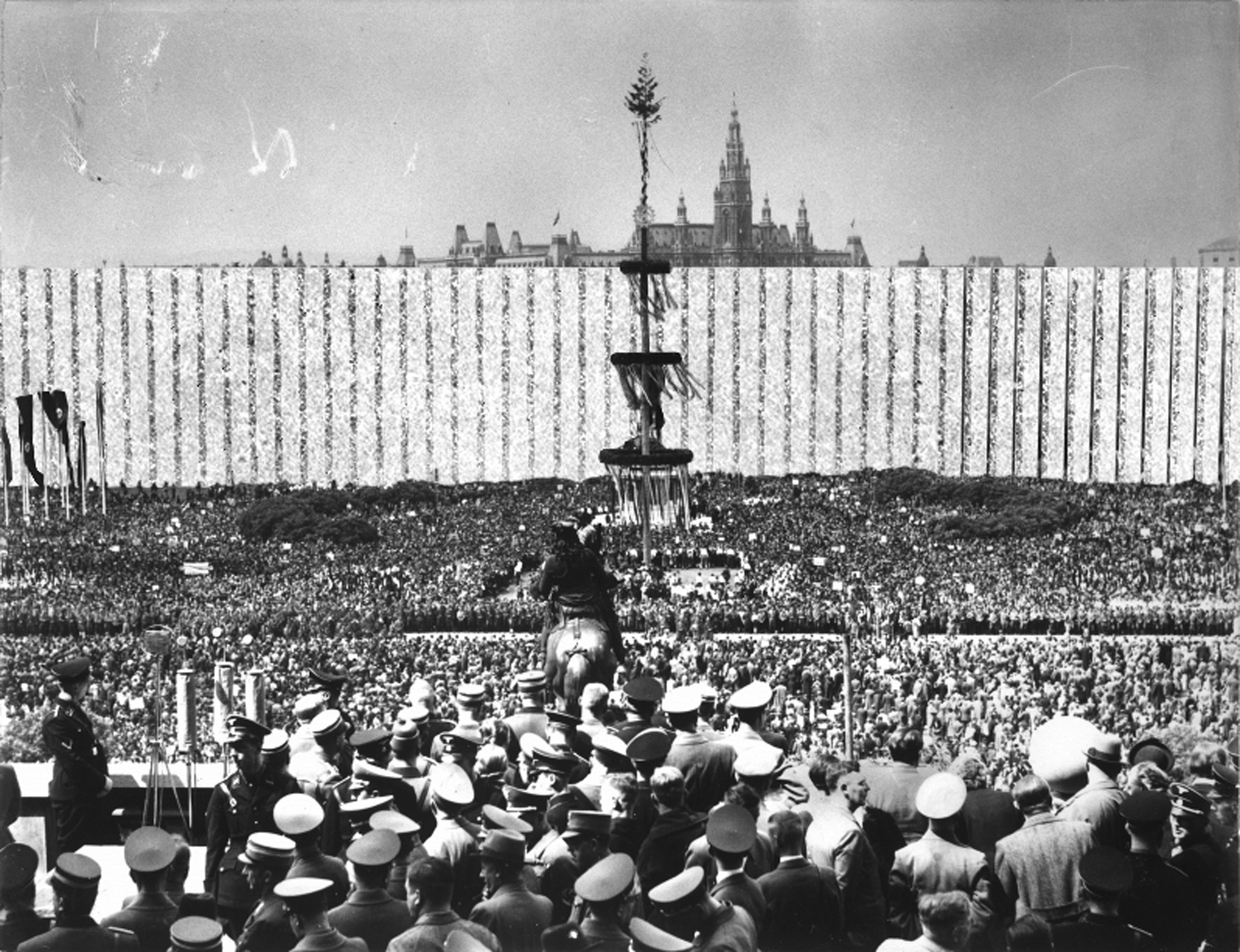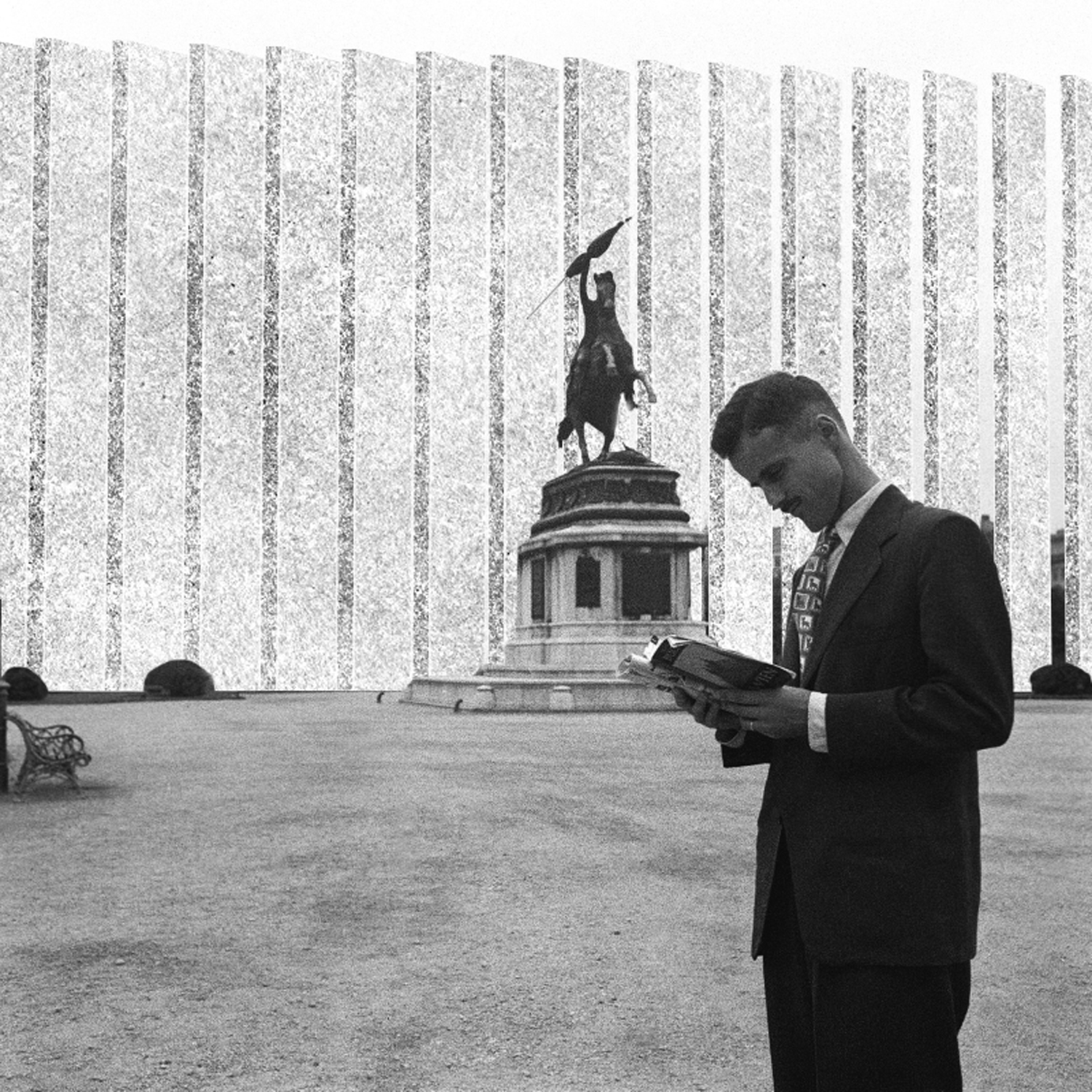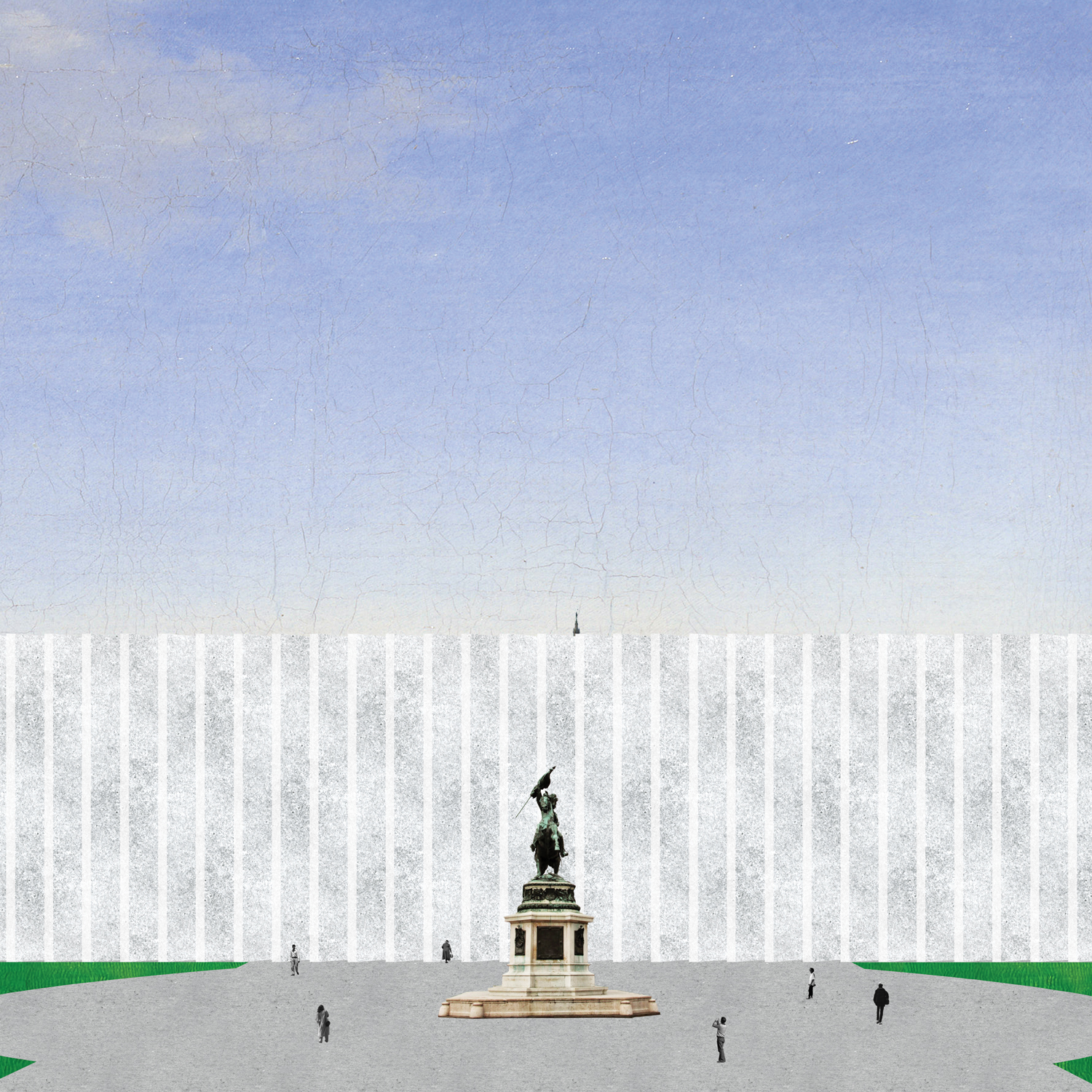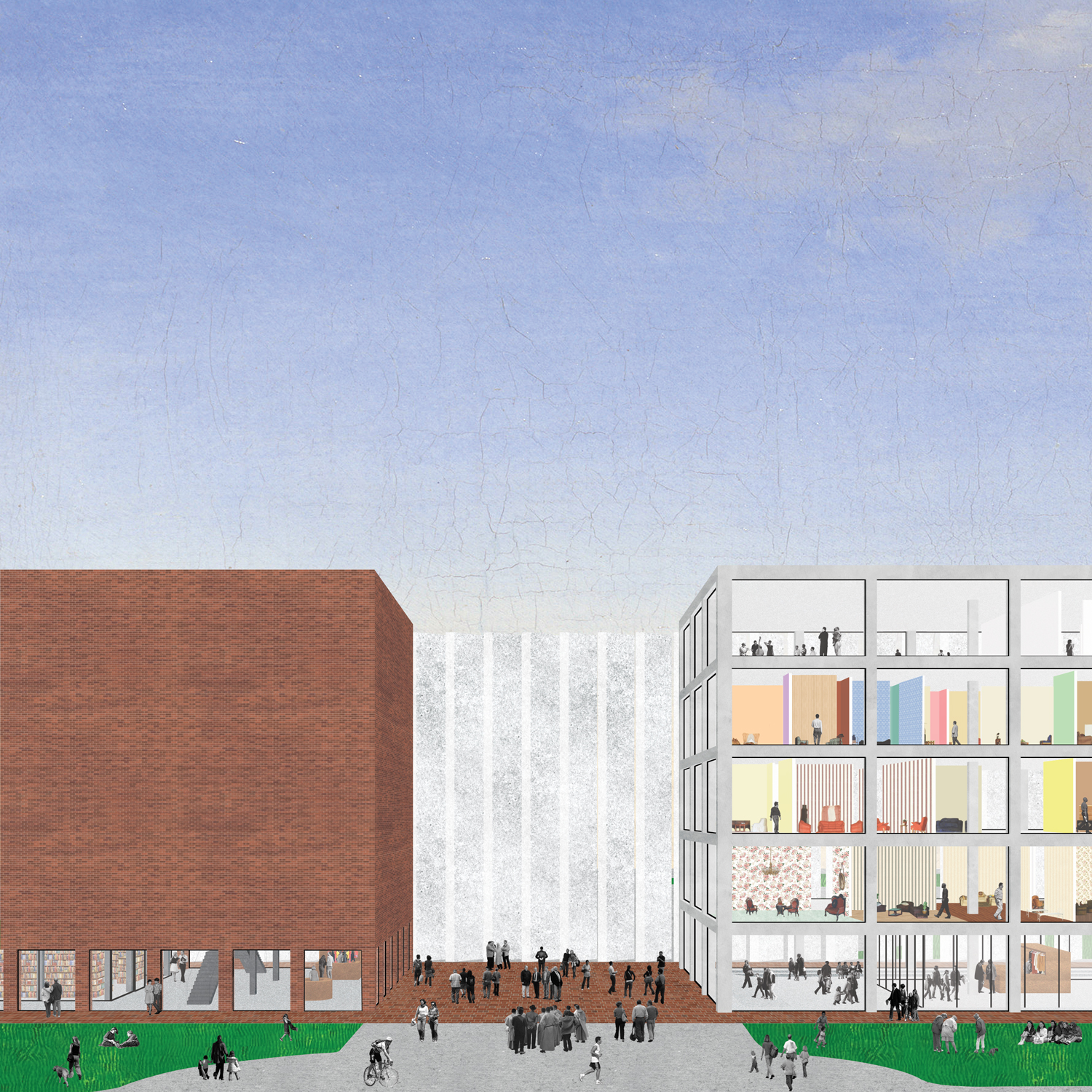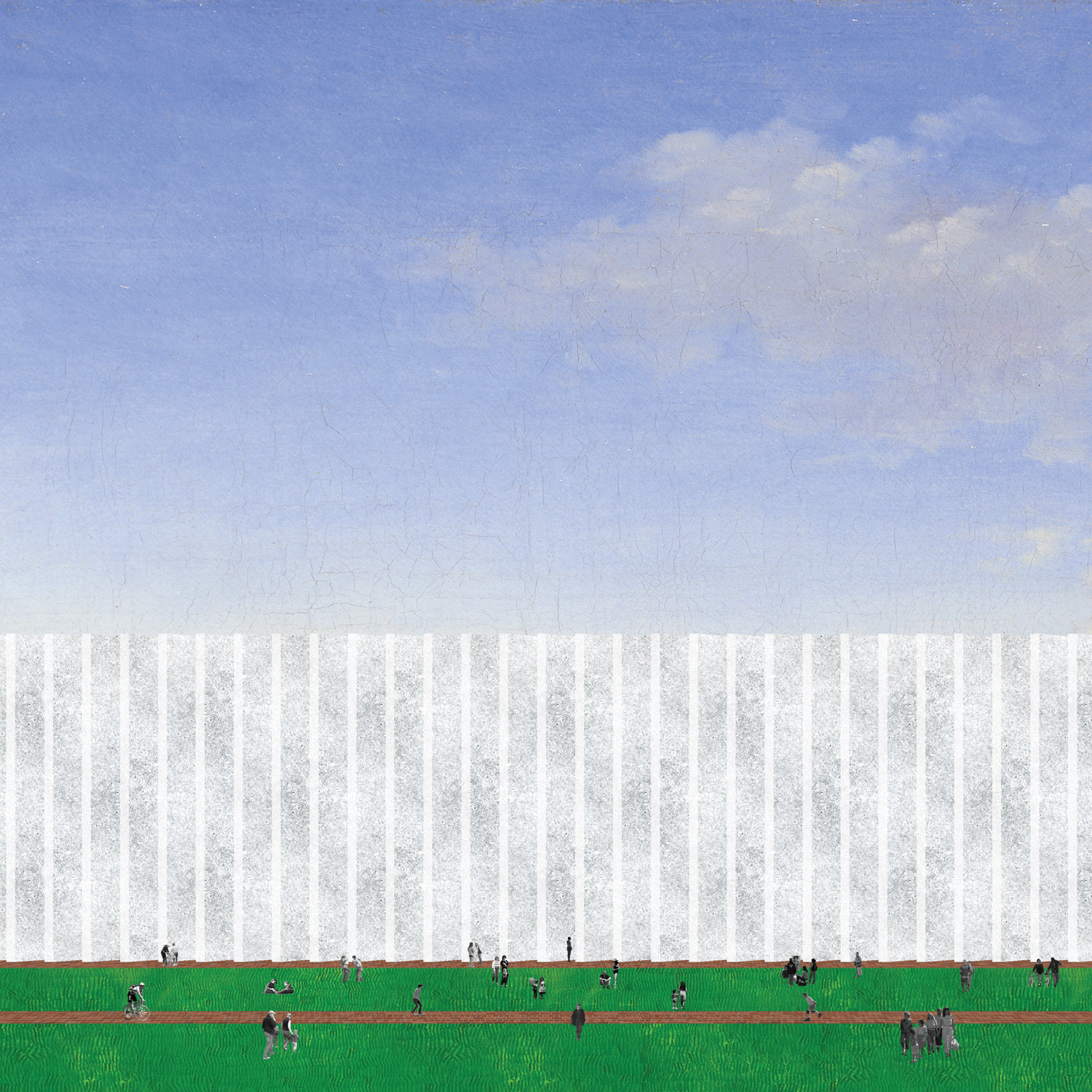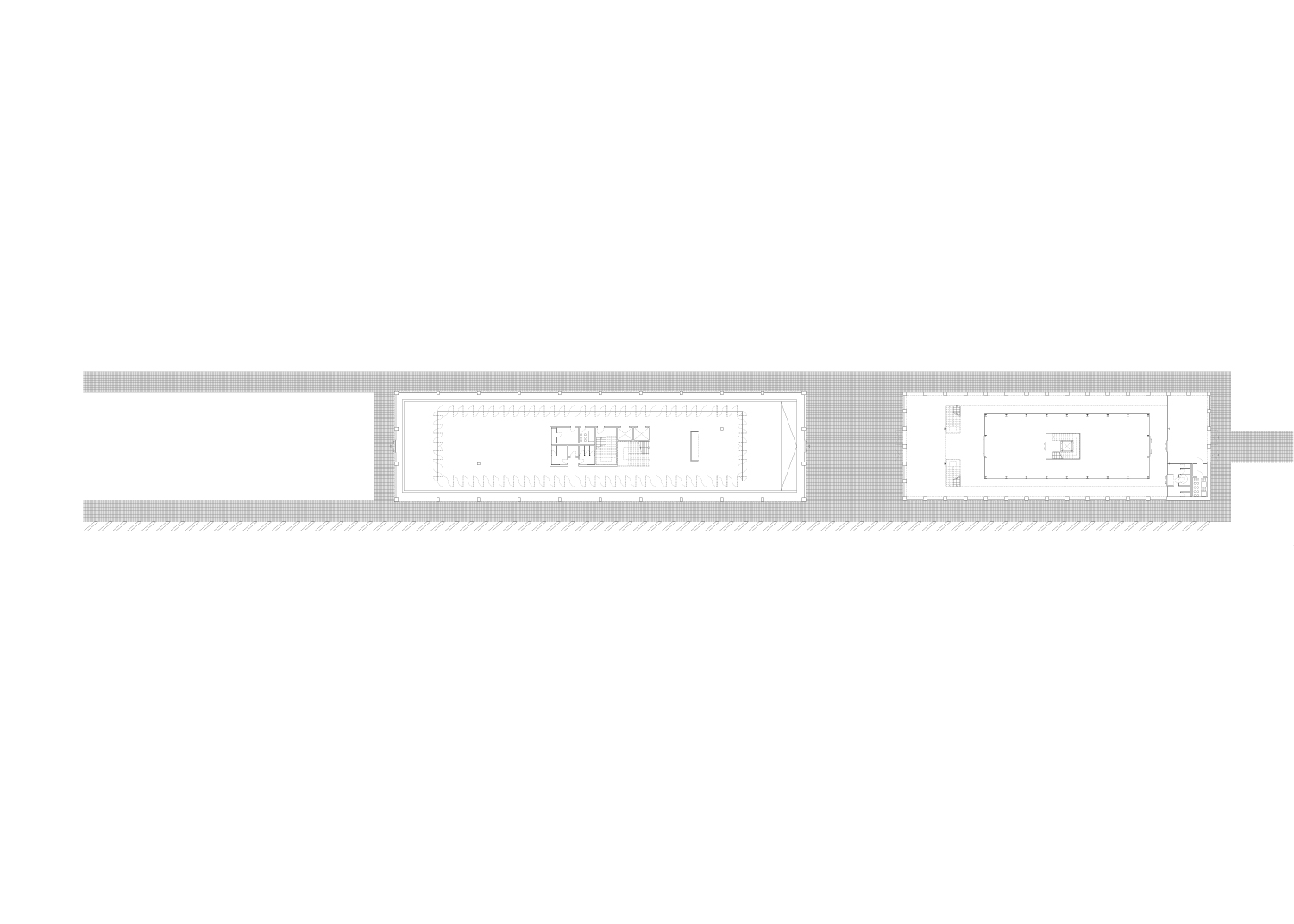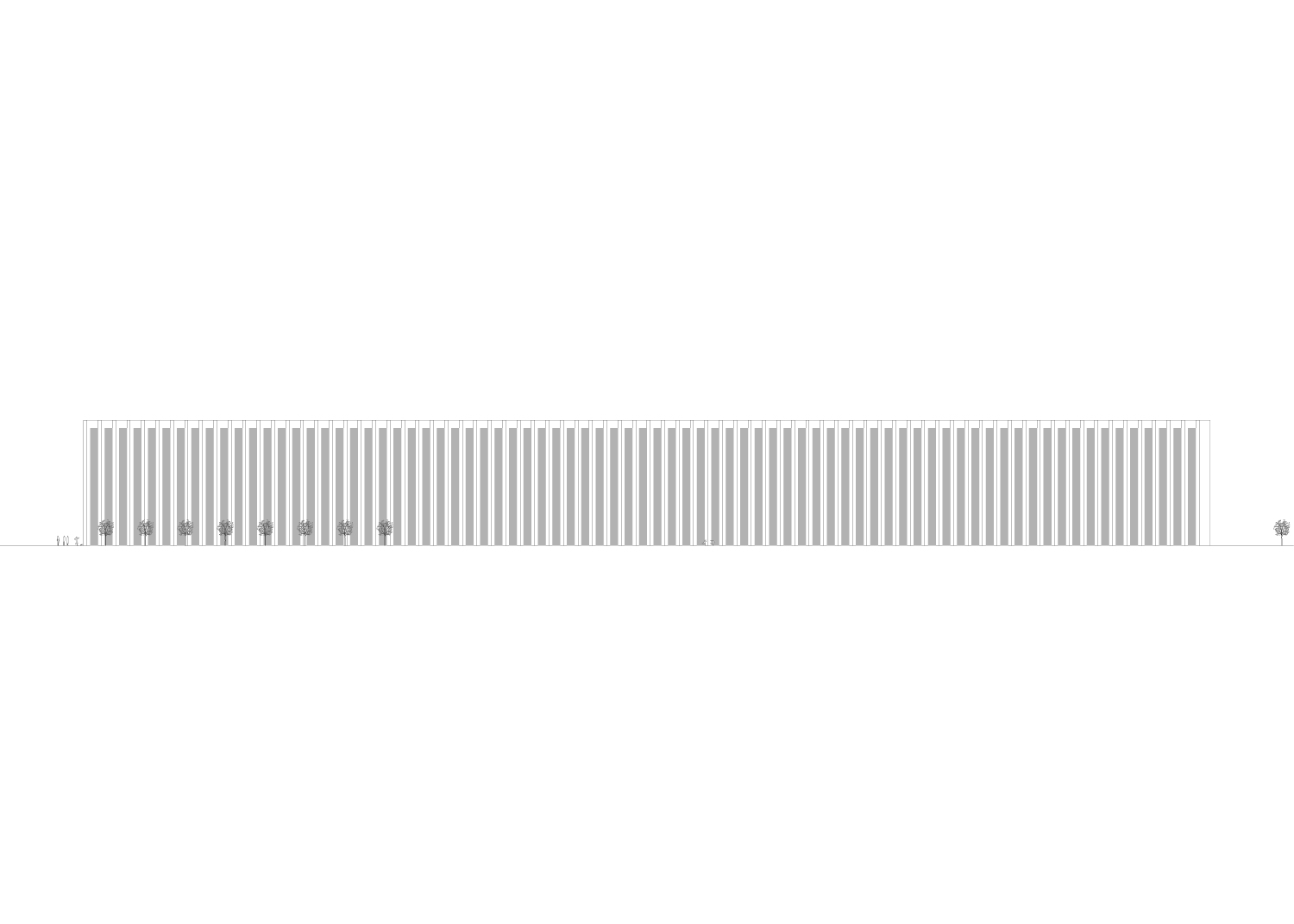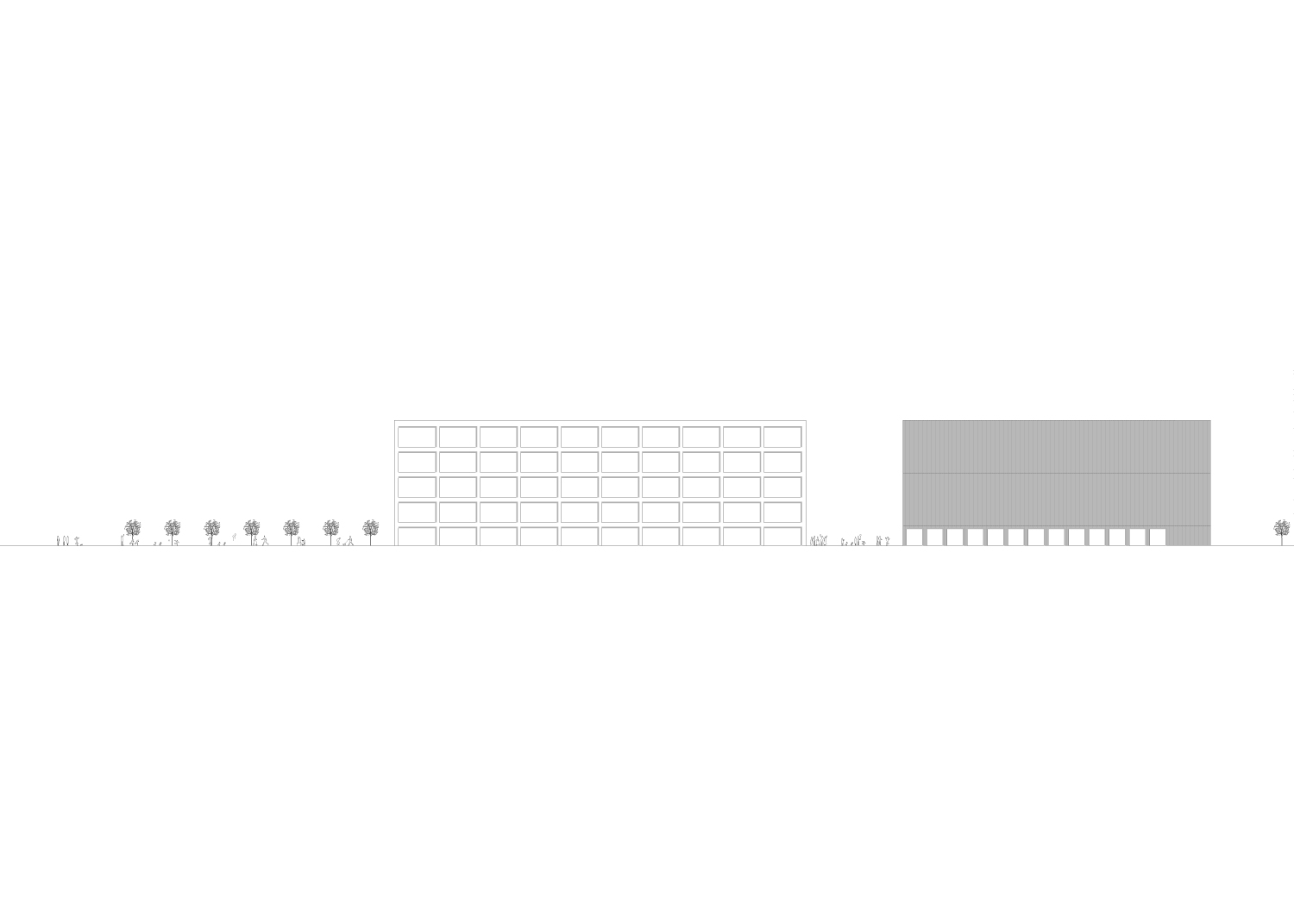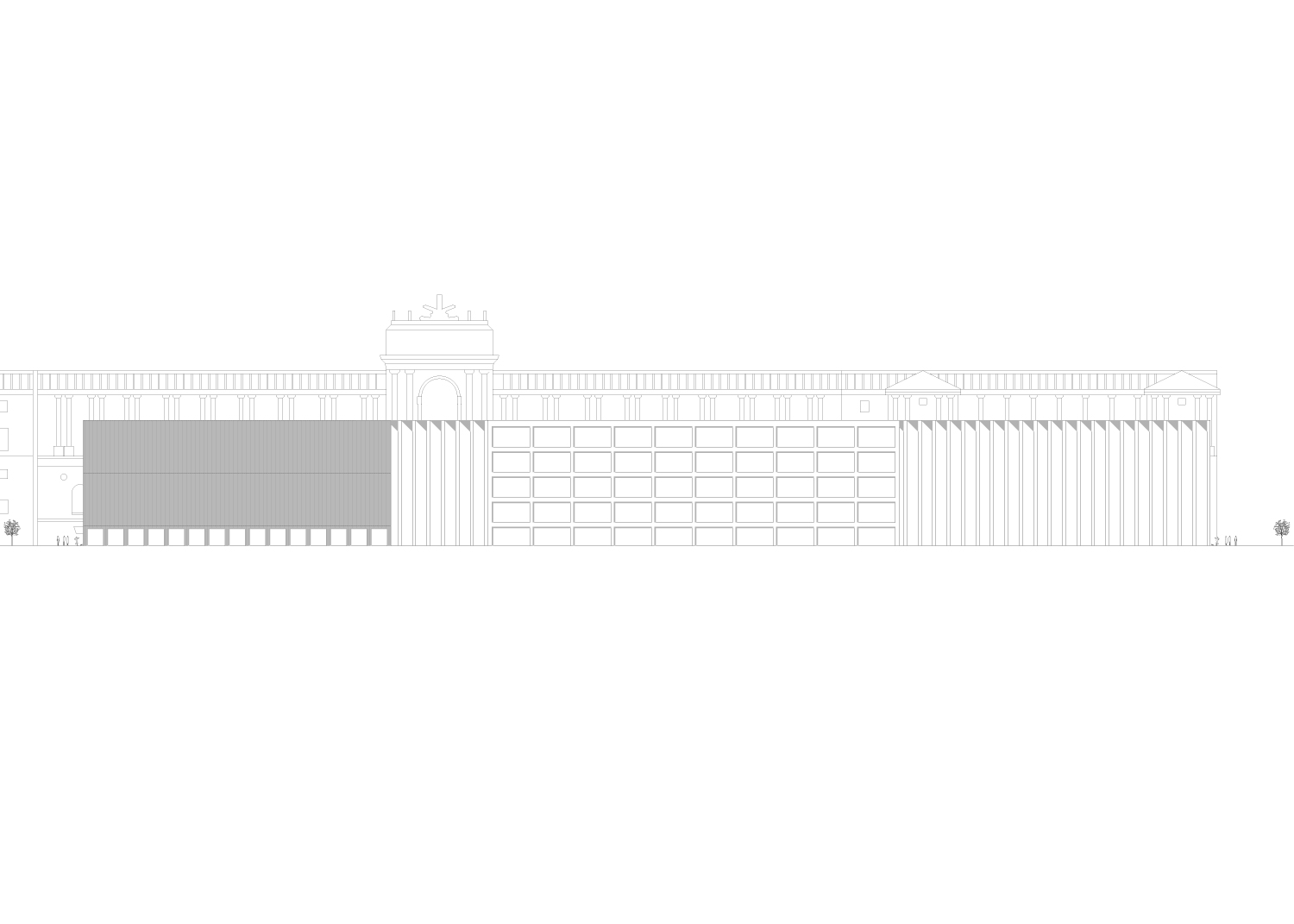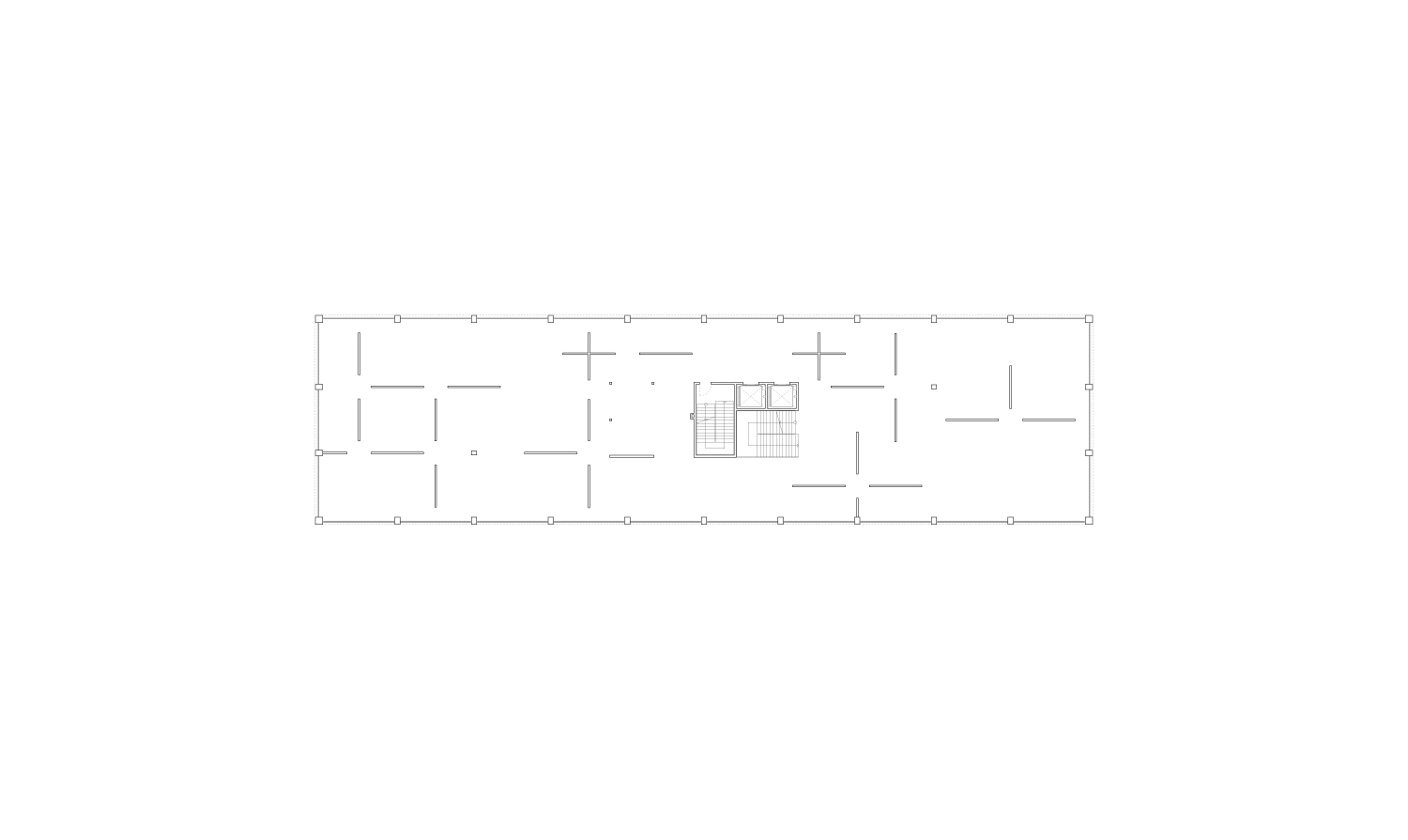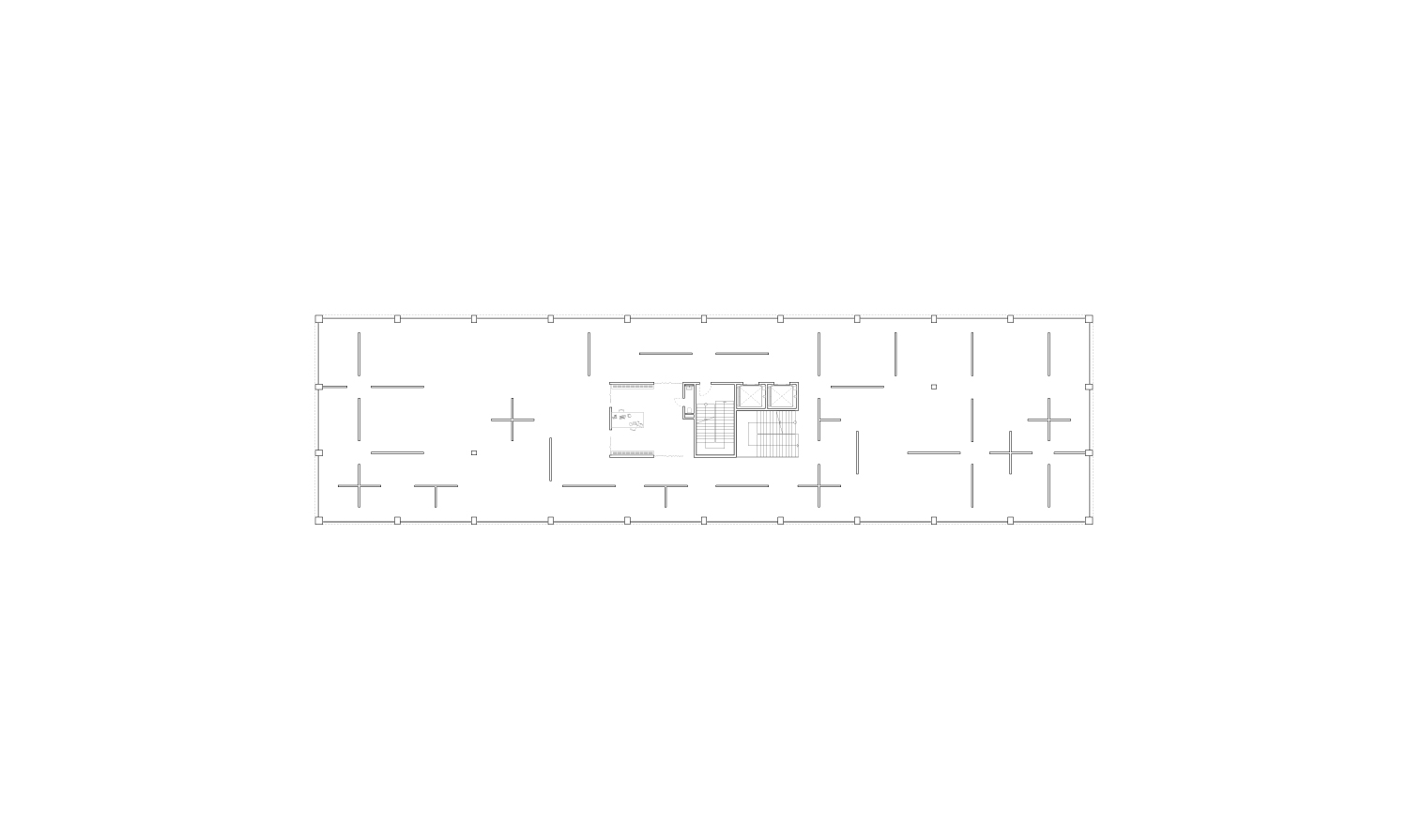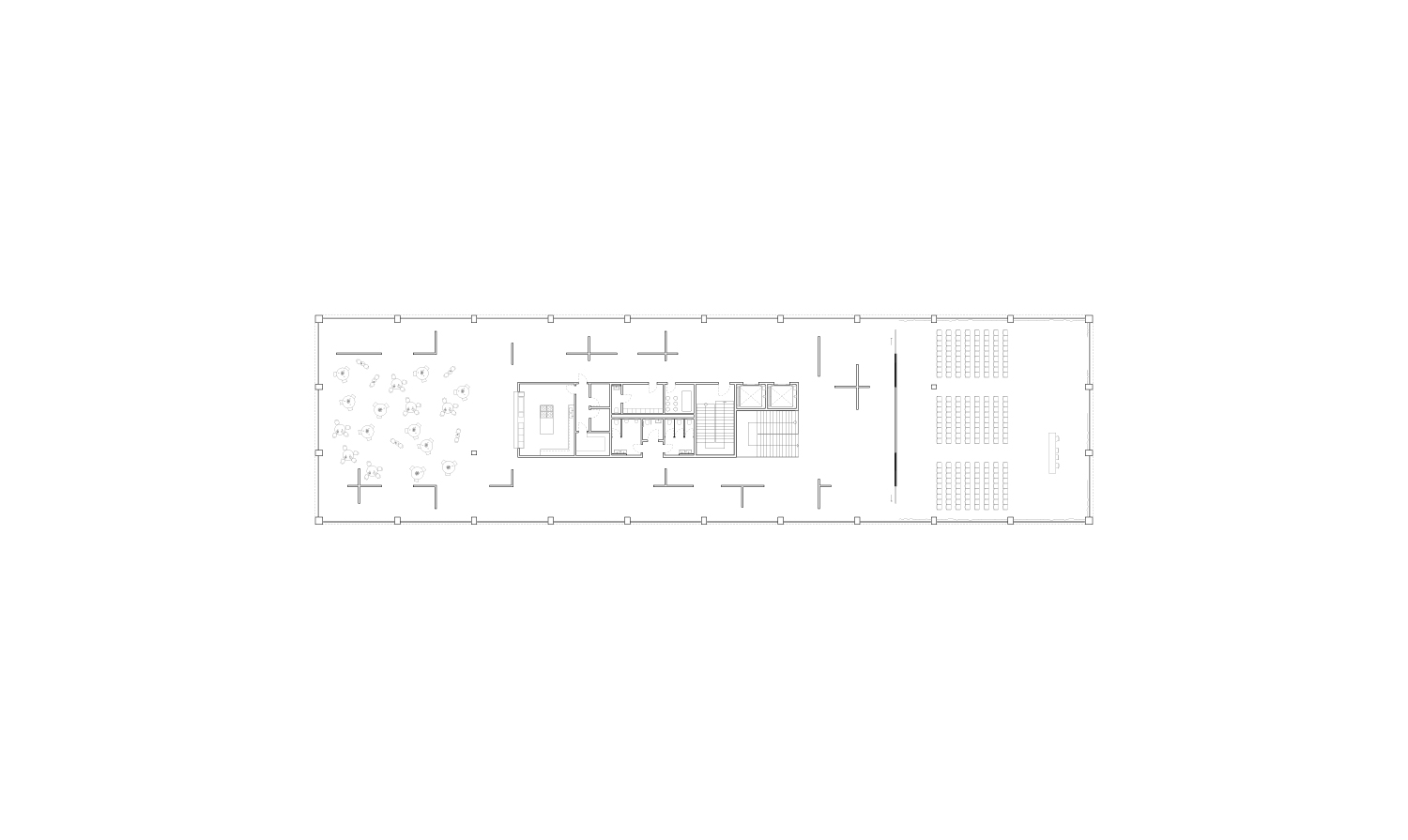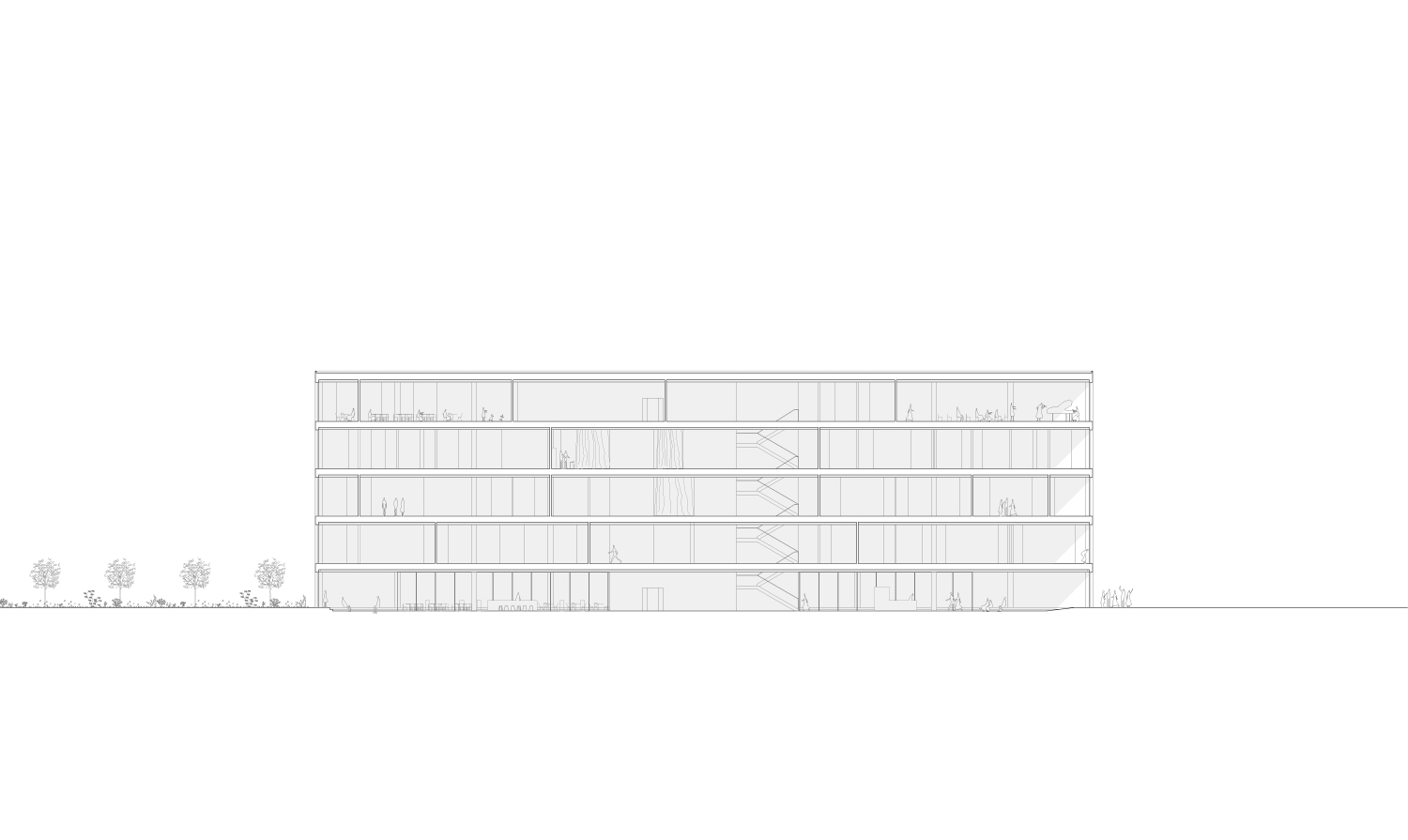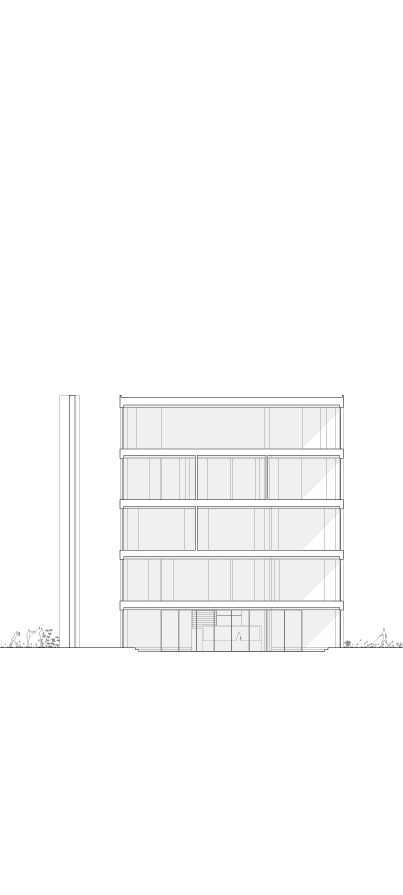1397-JHU-VIE.AT-2015
Client: Unknown
Status: Academic
Location: Vienna, Austria
Coordinates: 48.207042, 16.362662
Climate: Continental, Temperate
Material: Stone
Environments: Park, Urban
Visualizer: Studio
Scale: Large
Types: Archive, Cultural, Institutional, Museum
Heldenplatz has changed its form and use since the time of its materialisation. One main function, which was not intended in the beginning, is its application as a ‘Massenversammlungsort’ (rallying location). It seemed to be the only logical solution to the unfinished Kaiserforum. One can say that the only reason it became a ‘Massenversammlungsort’ is the combination of ‘unoccupied‘ space combined with the arched floorplan of Hofburg and the context of the location.
‘Beyond the Wall‘ is composed of four elements. The first element is a wall of concrete slabs painted white. This wall splits the current ‘platz’ into two. It acts as a border between two worlds. The wall counters Hofburg’s presence, avoiding it from advancing forward. The wall creates a limit to how far it’s presence could extend. While doing so, the area in between these two structures have a more concentrated effect. An area where the need for rallying, to give it a use and purpose, is only important here. The structure will act as a space occupier and space definer.
The second element is a transparent concrete structure that act as an exhibition ‚shelf‘, composed of private living quarters from the past and present. We wanted to define the history of Austria through the living quarters, ie. kitchen, bedroom, living room, etc. Instead of facts from history books of global history, the personal history of private individuals that lived in those times will be displayed. The transparency and the layout of the inner walls was arranged in order to blend everything together. The visitors will be able to perceive the ‚history‘ not only through the outside, but also through being in each individual rooms, while still having the view from the other rooms.
The third structure, the ‚archive‘, follows the same grid system like the exhibition structure, except it is incased with an outer brick shell. Within this building the entire national archive of Austria will be stored here. We wanted to place these two contrasting structures together to display two different types of definition of history, where one is experienced through human senses, while the other is being read and studied. A structure of open interpretations; the other based on facts.
